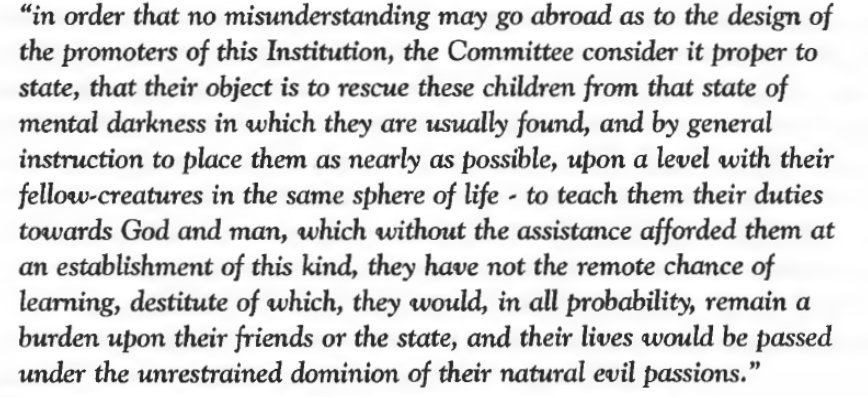Rural Yorkshire is anything but silent. The birds arrive first, singing out as dawn approaches, then the cattle join in lowing gently ready to be milked. In winter the wind howls down the moors and if living on a village street there would be the creak of waggon wheels and welcoming words when passing a neighbour. For Nancy, though, there was only silence.

Nancy piqued my interest. I was rounding out the census details for Thomas and Isabella (nee Preston) Wellock by adding in all household members even the supposedly unrelated ones in case there was a connection I had missed. In these parts of Yorkshire, the so-called servants were often nieces, nephews or cousins. I wondered what “kept by subscription” meant?
Then I realised that the Nancy with the illegible name in the 1871 and 1881 Wellock family censuses was the same person and right at the end of the forms was the gold. “Deaf and dumb from birth.”
It appears that Nancy was “adopted” by my 3x great grandparents Thomas and Isabella Wellock and continued to live with the Wellocks for the remainder of her adult life. To begin with she was supported through parish contributions, but I can only presume from later records that she came to be considered part of the family.
I imagined that Nancy’s parents must have died when she was a child, but that was not to prove the case. Nancy (born in 1838) was the first of five girls both to Alice Litton and William Serjeanston of Skeld Gate, an area on the edge of Rylstone. Whilst Alice had died in 1854, William lived into his 80s. The feeling I had that these weren’t good parents was compounded by the 1851 and 1861 censuses. In 1851, eleven-year-old sister Mary was living with her uncle Silvester and in 1861 (by which time Nancy was living with the Wellocks) sister Alice was living with a different Uncle (and went on to marry his son, her cousin), sister Ann had died, and now it was sister Grace was working for Silvester’s son, William. But when faced with nothing but unrelenting rural poverty and a daughter who was deaf and dumb it is not fair to judge.
Nancy was in fact fortunate to be born when she was, for attitudes towards deaf children were changing. The first public school for deaf children had been established in Bermondsey in 1792 and in 1809, the first book of sign language for hearing children “Invited Alphabet: Or, an address of A to B” had been published by RR.

The Yorkshire Residential School for the Deaf, Doncaster, became the sixth such school in existence when it was founded by the Rev. William Carr Fenton 1829. The first headmaster, Charles Baker, was to lead the school for 45 years and became hugely influential in the development of education for deaf children. This included, in 1834, persuading the Earl of Harewood to endeavour to include provision for the education of deaf children in the 1834 “Poor Law Amendment Act.” The Earl was not fully successful but did manage to get a clause included to allow Boards of Guardians to contribute towards the maintenance of the blind and the deaf.
This was Nancy Serjeanston came to be one of Charles Baker’s many pupils for a period including the 1851 census.
The school focused primarily on teaching the children to read and write, supplemented by signing. There was much less effort expending teaching deaf children to speak. Whilst Nancy’s whole world must have opened up at this point in her life the lack of speech would have remained an impediment for many people at that time could not read (including Thomas Wellock at the time of his marriage).
It appears that Nancy was not as successful as other pupils in finding independent employment after school as she was kept by subscription on her return. The only document to list her as having an occupation was the 1881 census where she was noted as being a domestic servant. But what is written about women is never the full story. As part of the Wellock farming household, Nancy would have had to work as hard as the rest of the family.
The 1880s weren’t a happy time for the Wellock family. Benjamin Preston, son of Thomas & Isabella died aged just 32 in a tragic accident in 1883 leaving a widow (Mary) and five children under the age of ten. Benjamin’s widow, Mary, moved to back to Wilsill near her own family and by 1891 Nancy had joined her. This may have been immediately after Benjamin died but I like to think it was after Nancy had nursed the elderly Thomas & Isabella who died in 1885 & 1886 respectively returning the love and support, the couple had given her. Nancy continued to live with Mary until her death from chronic pneumonia on 27 December 1891.

Nancy has not been easy to research. Within the censuses her surname is variously recorded as Sergeanston, Serjeanston, Sangeson, Sorgson and Scrpanlton and only in the first, in 1841, is she living with her own family. Without direct descendants of her own, no-one is really looking that hard for her. It is only thanks to her long association with my own ancestors, Isabella & Thomas, who took her into their household, that I found and pulled on the tiny thread “kept by subscription.” Those with physical disabilities often feel invisible and it is a pleasure to write this short blog in the hope that it helps bring Nancy out of silence.
